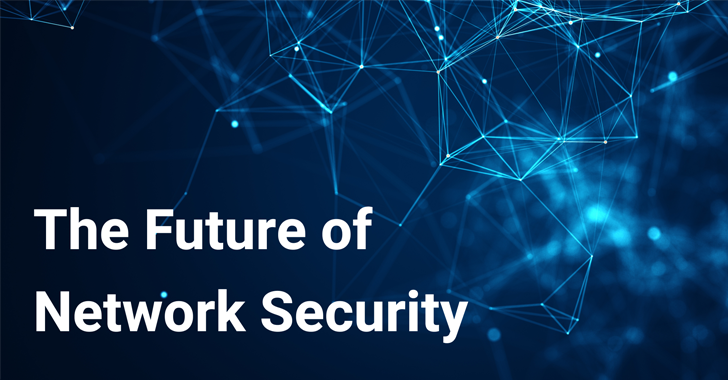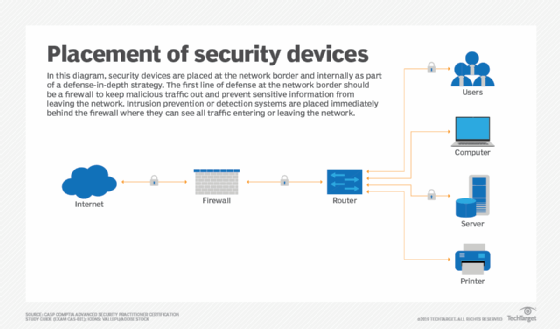Data and Network Security: Key Strategies to Safeguard Your Digital Infrastructure
Data and Network Security: Key Strategies to Safeguard Your Digital Infrastructure
Blog Article
How Data and Network Safety Secures Against Arising Cyber Risks
In a period noted by the quick advancement of cyber dangers, the value of information and network protection has never been much more pronounced. Organizations are increasingly reliant on sophisticated safety procedures such as security, gain access to controls, and aggressive surveillance to protect their electronic properties. As these dangers come to be a lot more complicated, recognizing the interplay in between data protection and network defenses is necessary for reducing dangers. This discussion aims to check out the vital components that fortify a company's cybersecurity stance and the techniques required to stay in advance of prospective susceptabilities. What remains to be seen, nevertheless, is how these actions will evolve despite future obstacles.
Understanding Cyber Dangers

The ever-evolving nature of modern technology consistently presents new susceptabilities, making it crucial for stakeholders to remain attentive. Individuals might unknowingly succumb to social design strategies, where opponents adjust them into divulging delicate information. Organizations face unique challenges, as cybercriminals typically target them to exploit valuable information or interfere with procedures.
In addition, the rise of the Web of Things (IoT) has actually increased the attack surface area, as interconnected tools can act as entry points for opponents. Recognizing the value of robust cybersecurity practices is vital for alleviating these dangers. By fostering a thorough understanding of cyber companies, threats and people can apply effective techniques to protect their electronic properties, making certain strength when faced with a progressively complex hazard landscape.
Secret Components of Information Safety And Security
Making certain information safety needs a multifaceted approach that incorporates different crucial parts. One essential component is data file encryption, which transforms sensitive info into an unreadable layout, obtainable only to licensed individuals with the appropriate decryption secrets. This functions as a crucial line of defense versus unauthorized accessibility.
One more vital part is access control, which manages who can view or manipulate data. By executing stringent user authentication procedures and role-based accessibility controls, organizations can reduce the risk of insider threats and data violations.

Furthermore, information concealing strategies can be employed to secure sensitive details while still permitting its use in non-production atmospheres, such as screening and advancement. fft perimeter intrusion solutions.
Network Safety And Security Strategies
Implementing robust network safety and security techniques is vital for securing an organization's electronic infrastructure. These techniques involve a multi-layered method that includes both equipment and software application solutions made to shield the honesty, discretion, and availability of information.
One crucial part of network safety and security is the implementation of firewall programs, which function as a barrier between relied on inner networks and untrusted outside networks. Firewalls can be hardware-based, software-based, or a mix of both, and they help filter inbound and outbound traffic based upon predefined safety more information guidelines.
In addition, intrusion discovery and prevention systems (IDPS) play an essential role in keeping track of network website traffic for suspicious tasks. These systems can alert managers to potential breaches and act to reduce threats in real-time. On a regular basis covering and updating software application is additionally important, as susceptabilities can be exploited by cybercriminals.
Moreover, implementing Virtual Private Networks (VPNs) makes sure secure remote gain access to, securing information transmitted over public networks. Segmenting networks can decrease the attack surface area and contain possible breaches, limiting their influence on the general infrastructure. By taking on these approaches, organizations can properly fortify their networks versus emerging cyber hazards.
Best Practices for Organizations
Developing best techniques for companies is vital in preserving a strong safety and security posture. A thorough strategy to data and network safety and security starts with routine danger assessments to recognize vulnerabilities and potential hazards.
Furthermore, continuous staff member training and understanding programs are vital. Employees need to be informed on recognizing phishing efforts, social engineering methods, and the relevance click here to read of adhering to security methods. Routine updates and spot monitoring for software and systems are additionally important to protect versus understood vulnerabilities.
Organizations have to examine and establish event reaction intends to make sure preparedness for potential violations. This consists of establishing clear interaction networks and roles throughout a security case. Moreover, data encryption should be used both at remainder and en route to protect delicate details.
Finally, performing routine audits and compliance checks will aid ensure adherence to relevant guidelines and well-known plans - fft perimeter intrusion solutions. By following these finest methods, companies can dramatically enhance their resilience against emerging cyber dangers and protect their important assets
Future Trends in Cybersecurity
As organizations navigate a progressively complicated electronic landscape, the future of cybersecurity is poised to develop considerably, driven by changing and emerging innovations danger standards. One noticeable fad is the assimilation of expert system (AI) and maker knowing (ML) into safety and security frameworks, allowing for real-time threat discovery and helpful hints response automation. These modern technologies can evaluate large quantities of data to determine anomalies and potential breaches extra successfully than standard techniques.
Another critical fad is the surge of zero-trust design, which requires continual verification of user identifications and gadget safety and security, no matter their area. This technique reduces the risk of expert risks and boosts security against exterior assaults.
Furthermore, the raising adoption of cloud solutions necessitates durable cloud safety techniques that attend to distinct susceptabilities connected with cloud environments. As remote job becomes an irreversible fixture, safeguarding endpoints will likewise become vital, leading to a raised focus on endpoint detection and feedback (EDR) services.
Last but not least, regulative conformity will remain to form cybersecurity practices, pressing companies to embrace much more rigorous data security actions. Embracing these patterns will certainly be vital for companies to fortify their defenses and navigate the progressing landscape of cyber threats efficiently.
Conclusion
In conclusion, the implementation of robust information and network protection measures is essential for organizations to safeguard against emerging cyber risks. By utilizing encryption, accessibility control, and reliable network protection approaches, companies can considerably minimize susceptabilities and safeguard sensitive details.
In an era noted by the fast development of cyber dangers, the value of data and network security has actually never been extra pronounced. As these hazards end up being more complicated, understanding the interaction between data security and network defenses is crucial for reducing threats. Cyber risks incorporate a broad array of malicious activities intended at compromising the privacy, honesty, and accessibility of networks and data. A detailed strategy to data and network protection begins with routine threat assessments to determine susceptabilities and prospective dangers.In conclusion, the application of durable data and network safety actions is important for companies to safeguard versus emerging cyber dangers.
Report this page